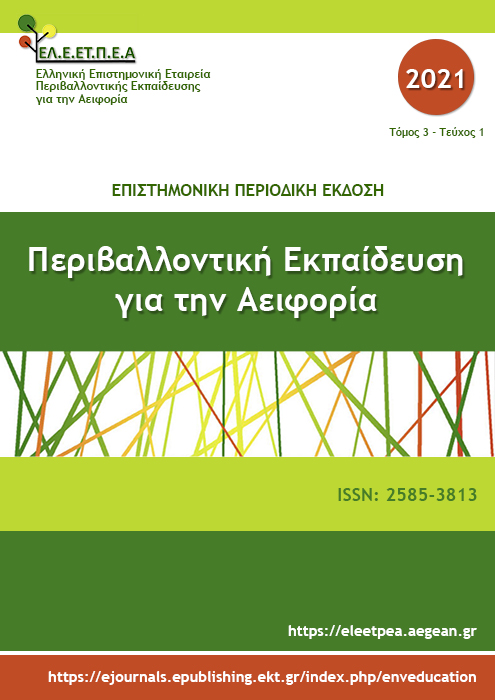Πολιτισμική Προσαρμογή και Έλεγχος Εγκυρότητας και Αξιοπιστίας του Ερωτηματολογίου Plant Awareness Disparity Index (PAD-I)
Résumé
Παρά την αδιαμφισβήτητη σημασία των φυτών για τον πλανήτη και την ανθρώπινη ευημερία, παρατηρείται ότι συχνά παραβλέπονται και υποτιμώνται. Το φαινόμενο αυτό, γνωστό ως «τυφλότητα απέναντι στα φυτά», «έλλειμα επίγνωσης για τα φυτά» ή «διαφορά επίγνωσης για τα φυτά», έχει προσελκύσει το ενδιαφέρον πολλών ερευνητών τα τελευταία χρόνια. Η αυξανόμενη αναγνώριση της σημασίας των φυτικών οργανισμών στο πλαίσιο της βιώσιμης ανάπτυξης υπογραμμίζει περαιτέρω την ανάγκη για ορθολογική αξιολόγηση του εν λόγω ζητήματος. Η παρούσα μελέτη έχει ως στόχο την πολιτισμική προσαρμογή και τον έλεγχο της εγκυρότητας και της αξιοπιστίας του ερωτηματολογίου Plant Awareness Disparity Index (PAD-I) στο ελληνικό πλαίσιο. Το PAD-I αποτελεί επίσημο ερευνητικό εργαλείο αξιολόγησης της «τυφλότητας απέναντι στα φυτά», το οποίο αναπτύχθηκε και δημοσιεύθηκε το 2022 από το Πανεπιστήμιο του Μέμφις στις Ηνωμένες Πολιτείες Αμερικής. Η ελληνική εκδοχή του PAD-I παρουσιάζει παρόμοια παραγοντική δομή με εκείνη του πρωτότυπου εργαλείου, έπειτα από την αφαίρεση τριών ερωτήσεων και τη συγχώνευση δύο παραγόντων. Επιπλέον, παρουσιάζει υψηλό συντελεστή εσωτερικής συνέπειας (α = 0,823), γεγονός που ενισχύει την αξιοπιστία του κατά την εφαρμογή στον ελληνικό πληθυσμό και επιτρέπει τόσο την αξιολόγηση της σύνδεσης των Ελλήνων πολιτών με τον φυτικό κόσμο όσο και τη διεξαγωγή συγκριτικών μελετών με άλλες πολιτισμικές ομάδες.
Article Details
- Comment citer
-
Αμπράζης Α., Μπουμπουρέκας Α., & Παπαδοπούλου Π. (2025). Πολιτισμική Προσαρμογή και Έλεγχος Εγκυρότητας και Αξιοπιστίας του Ερωτηματολογίου Plant Awareness Disparity Index (PAD-I). Περιβαλλοντική Εκπαίδευση για την Αειφορία, 7(1), 21–41. https://doi.org/10.12681/ees.41013
- Rubrique
- Articles

Ce travail est disponible sous licence Creative Commons Attribution - Pas d’Utilisation Commerciale - Partage dans les Mêmes Conditions 4.0 International.
Οι συγγραφείς διατηρούν τα πνευματικά δικαιώματα και παρέχουν στο περιοδικό το δικαίωμα της πρώτης δημοσίευσης μαζί με την αδειοδότηση της εργασίας με CC-BY-NC-SA, που επιτρέπει σε άλλους να μοιράζονται αυτή την εργασία με αναγνώριση του συγγραφικού δικαιώματος και την αρχική δημοσίευση σε αυτό το περιοδικό.




